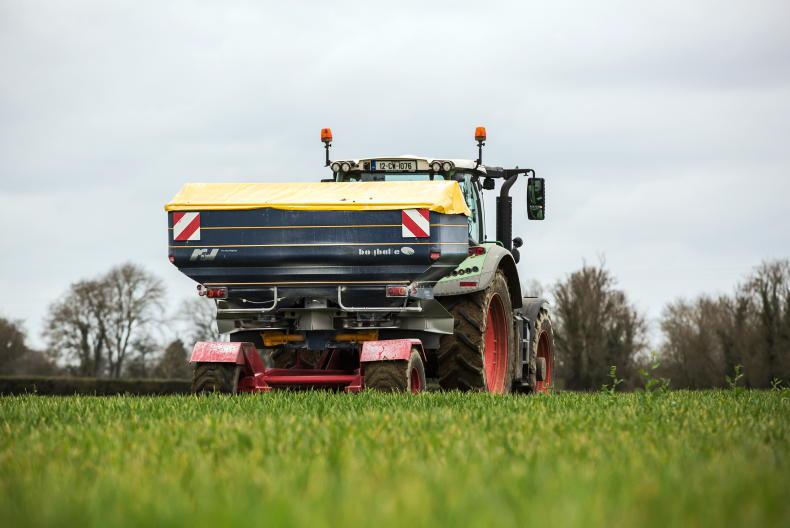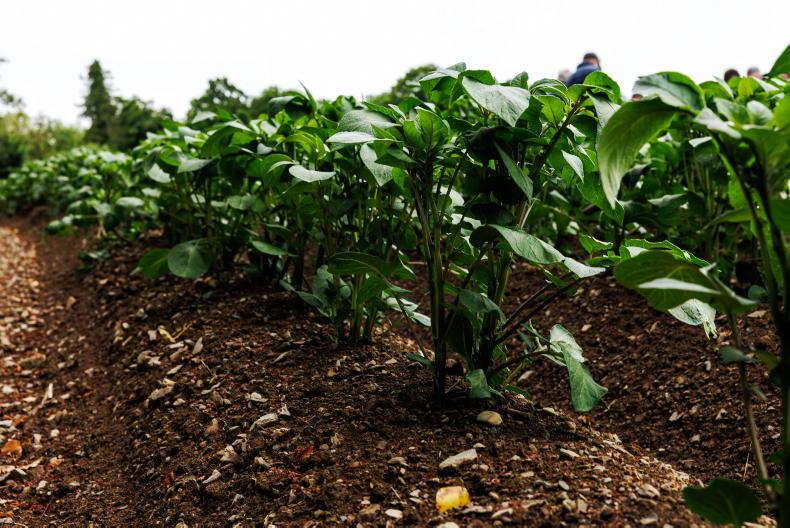A farm experiment which applied fungicide to maize at the start of August has left the crop looking visibly cleaner. This will mean more healthy green leaf to go into the pit when the crop is harvested in the near future.
This particular crop, grown near the coast in south Co Wexford, was a continuous maize site for over 15 years and so carries a higher risk of infection. Disease pressure is higher when both of these factors (coastal plus continuous) combine. A third factor is variety and this 9ac crop was sown in the open with Atrium, which has early maturity but is also quite prone to eyespot.
Eyespot on maize (Aureobasidium zeae) is a foliar disease that causes small circular lesions with a tiny eye in the centre. An individual lesion is of little consequence but thousands of them will cause the death of leaves and reduce the proportion of digestible foliage in the silage. Control of eyespot is especially important for later maturing crops and for crops that mature later because they are sown in the open.
Practice
It has been common practice for growers to apply fungicide on maize crops that are subject to a number of risk factors at the same site, especially in more coastal regions. Until recently, the main product used was Punch C, but this is no longer an option. This tended to be applied in early July when it was still possible to get into crops to spray without causing excessive damage with standard sprayer units. However, with foliar diseases mainly being a problem late in the season, many crops were still attacked, perhaps even more aggressively, after the protection of the fungicide wears off.
The management of this crop was quite different in this regard. Firstly it was sprayed with Opera, a triazole plus strobilurin combination containing epoxiconazole (50g/l) and pyraclostrobin (133g/l), and applied at 1.5 l/ha on 1 August. This would be seen as quite late in terms of crop height but crops were a bit more backward this year and a high clearance sprayer with a wide boom was used to spray the crop. An 11m section was left unsprayed in the body of the crop by turning off some sections of the boom.
Dramatic difference
Last week, the difference between the unsprayed area and the body of the crop was dramatic. Eyespot infection had been under way in the untreated strip for a few weeks and many of the upper leaves were visibly infected, with some partly desiccated at that point. Contrast that with the areas that were sprayed, which were still a vibrant green to the top leaf. This was evident by the colour and the fullnes of the leaves in the treated canopy.
The amount of additional green vegetation in the sprayed crop was very evident. However, there were a few individual leaves in the sprayed area that had a lot of eyespot infection. So perhaps the sprayed crop could still get infected with eyespot before it is harvested. But it must also be said that perhaps these leaves might not have been infected had there not been an unsprayed area close by to provide a high level of inoculum.
Or perhaps these individual leaves were shaded from the spray by other leaves during spraying.
One message is relatively clear though. If eyespot presents a real risk to a crop, fungicide application needs to be late to give it a reasonable chance of containing the disease for most of the remainder of the season. And this will require the use of high-clearance sprayers to minimise damage during spraying.
Opera is now fully cleared for use on forage and grain maize, sown either in the open or under plastic. Its performance in this crop was impressive in terms of eyespot control. But in terms of integrated pest management, it is still important to take action to reduce the pressure from this disease through rotation and the use of more resistant varieties in high risk areas.











SHARING OPTIONS